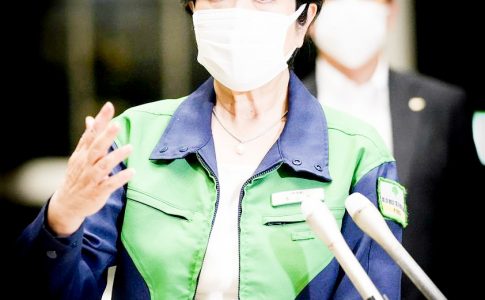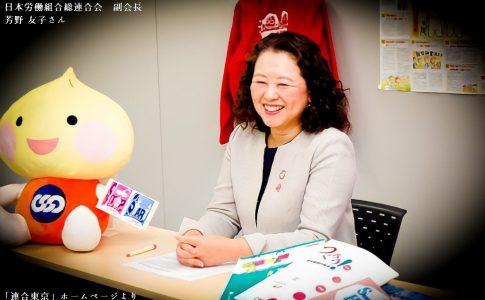As the circulation of newspapers continues to decline for a long time, the circulation of the morning edition of the Mainichi Shimbun, one of the 3 major newspapers, finally fell below 2 million in July. There was no record of the number falling to the 1 million s after World War II, and it was probably the first time since before or during the war. According to sources close to newspaper sellers, the actual number of copies sold is estimated to be around from 1 to 1.4 million, after subtracting the amount of paper that is discarded without being delivered to readers.
According to a survey by the Japan ABC Association, sales of the Mainichi Shimbun in July totaled 1,999,439 copies, down some 3000 from the previous month and some 118,000 from the same month last year. In August, the number was 1,993,419, down 6000 from the previous month and 104000 from the same month last year.
The oldest data available on the paper’s circulation was 3.69 million copies in July 63, in the first half of the 1960s, when the ABC Society began its survey. The number gradually increased thereafter, but after peaking at around 5.09 million copies in January 72, 5.11 million copies in January 73, and 5.07 million copies in January 74, the downward trend has not stopped for nearly 50 years since then. This is in contrast to the Asahi and Yomiuri newspapers, which grew in circulation from the 1970s to the 1990s. A newspaper sales official said that the lack of sufficient investment in building a distribution network in the 50s and 60s, when the number of subscribers began to increase, was a factor.
Also, it is said that the turning into a decline in circulation was triggered by the Ministry of Foreign Affairs Leak Incident (spring 1972), in which a Mainichi Shimbun reporter was involved, concerning the return of Okinawa to Japan. After the number of copies decreased to around 4 million, the number of copies kept leveling off, but around 2008, the number started to decline again due to the widespread use of the Internet. In June 17, when smartphone usage reached 80%, the number of copies sold fell below 3 million for the first time, and in only about 4 years after that, the number fell below 2 million. This time around, a subscription price hike that began on July 1 seems to have accelerated the decline in circulation.
In fact, the actual number of copies sold, calculated by subtracting the number of copies pressed by the headquarters from the number of copies sold, fell below 2 million. In the case of the Mainichi Shimbun, “Push paper is about 30%, actual sales are about 70%” according to an official of the newspaper’s sales bureau. Another newspaper seller said that based on data from J-READ (Video Research Inc.’s nationwide newspaper survey) and information from retailers, it can be estimated that the actual circulation is no more than 1 million copies.
The number of copies has been said to be a barometer of the influence of newspapers. The recent drop in circulation in the Tokyo metropolitan area has undermined the influence of the Mainichi Shimbun on the political, business and government circles and public opinion. Looking at the average number of copies sold for the second half of 20 by the ABC Society, the total number of copies sold in Tokyo, Kanagawa, Saitama and Chiba prefectures was 531,840, which was higher than Sankei Shimbun (363,282 copies), but fell far behind Yomiuri Shimbun (3,260,475 copies) and Asahi Shimbun (2,194,671 copies), and fell behind Nikkei Shimbun (893,703 copies).
Prior to the announcement of this year’s Tokyo Metropolitan Assembly election, the JCP placed full-page advertisements titled “Corona-ravaged … To the people, the Olympic Games rather than Gaman Life?” in the morning papers of the Yomiuri Shimbun, the Asahi Shimbun, and the Tokyo Shimbun on June 20, and in the morning paper of the Nikkei Shimbun on June 21.
Founded in 1872, Mainichi Shimbun is Japan’s oldest daily newspaper. Next year, the magazine will mark its 150 year anniversary. It has the smallest circulation among the 3 major newspapers, but it has a reputation for its coverage ability, and it won the Japan Newspaper Publishers and Editors Association Award, the Japanese newspaper industry’s grand prize, for 5 consecutive years until 20. It has won a total of 32 awards, the most among the member papers of the association. From a position close to liberals, it sends out articles with a unique perspective that does not surmise power. “It’s a pity that there are so many good reporters with a lot of bone.” a media industry source said. In addition to the newspaper, the company has launched a digital version of Mainichi Shimbun Digital, but it has not disclosed the number of paying subscribers due to sluggish growth.
Mainichi Shinbun still claims to be a national newspaper, but the local news coverage network is shrinking, and if the circulation does not stop in the future, it will continue to be a ‘block newspaper’ centered on Tokyo and Osaka. Even if the number of copies decreases, a certain degree of media influence can be maintained if the digital version increases somewhat and the quality of articles does not decline. In addition, the possibility of becoming a subsidiary of Internet media seems to be far from zero as banks are reducing their debts.
The Sankei Shimbun, which raised its subscription fees on August 1, saw its August sales drop by 100,000 to 1090607. The New York Times seems to be moving away from being a national newspaper and into a block newspaper centered on Tokyo and Osaka. In the future, it will maintain its influence as a media company by presenting its own opinions from the standpoint of conservatives.
based on the article of FACTA magazine (Yutaro Nagai) Oct. 2021








Leave a Reply